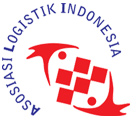A Leading 3PL Creates A Warehouse Template For Success
Steve Banker
For years, warehouse management system (WMS) suppliers have been introducing "template" solutions. These template solutions are either industry specific or are based upon getting a simpler warehousing solution up quickly. A best of breed WMS offers all sorts of configuration choices. The idea behind the template is that many of these configuration choices are predesignated in the template in order to achieve a faster implementation.
While over the years I've heard one WMS supplier after another brief me on their new templates. What I can't recall hearing were examples of customers actually using these templates.
Until now.
A Director of IT and Strategic Integration at a leading North American 3PL specializing in warehousing and other logistics solutions, told me they have made the template idea work for them. For new warehouse customers they have standardized on JDA Warehouse Management (formerly RedPrairie). As a 3PL that relies on JDA WMS, they have their own JDA WMS center of excellence, do their own implementations, and provide their own support on this solution. They also have developed their own proprietary template for this solution.
This director described the template as providing "repeatable best practices" that they can then "tailor" for their clients. As an example, RF and computer screens would be specifically configured to their customer's requirements.
Interestingly, the flexibility of the JDA solution is part of what creates thei ability to provide a template solution. When you hear the word "flexibility," you naturally think of more choices; which one would think would lengthen implementations. But the JDA solution has a business process management and service oriented architecture. What this means is that much of a process can be locked down through preset configuration switches, but the solution allows for exit points. For example, the trailer loading process can be largely predefined, but once a trailer is loaded and closed, there is an exit point. At this exit point, if there are any customer specific actions, like printing a bill of lading (BOL) for BestBuy, the system can be configured to look for information to populate destination specific BOLs.
They support their templates with label libraries. So if one of their new customers says, "this is the label we use for Best Buy," the 3PL can say "we can take the time and effort to duplicate your label, and charge you for the effort, or you can use our Best Buy label that has already been certified by Best Buy."
Another place where WMS solutions can require customization is around inventory attributes. In the JDA solution, there are many existing inventory attributes. Architecturally, inventory attributes are basically distinct columns in the WMS database structure. But JDA also has unnamed inventory columns which this 3PL can define depending upon their customer's needs. Because of this, a customer with a relatively unique inventory attribute can be supported without resorting to customization.
What I also found interesting is that templates are supported by giving a customer their own instance of the software for every new warehouse. A modern WMS can support multiple warehouses in one instance of the software. This can save on hardware costs. They have chosen to give every new warehouse its own instance because shared environment systems have some features that are enabled at the enterprise level, and thus prevent tailoring. One example is the look of user screens.
Secondly, regression testing is faster for an individual instance than in a shared environment.
Finally, virtualization technologies have led to steeply dropping hardware prices. From this IT director's perspective, the hardware savings from a shared environment are not worth the costs incurred in a longer implementation.
This 3PL gains about one new customer a month. Since July, all new warehousing customers have chosen to go the template route based on an implementation that comes in at "25 percent of the cost but which gives the customer 95 percent" of the functionality.
Finally, another source of savings surrounding implementations is that the configurability of the JDA solution has meant that they can hire business analysts, folks that understand warehousing, to gather customer requirements. These analysts speak "logistics" rather than "IT", and thus are easier for their customers to interact with. But their wages are also substantially less than that of IT analysts.
Not that long ago, a five month implementation was considered fast. This 3PL is now achieving relatively complex implementations in under two months. The Director told me that while modern WMS solutions have made many things quicker, integrating to customer systems is still labor intensive. Further, because the implementer is still at the mercy of the customer around issues like making their people available to help define the requirements, it is still going to be a challenge to implement in less than 30 days.
http://logisticsviewpoints.com/2014/01/20/leading-3pl-creates-warehouse-template-success/









